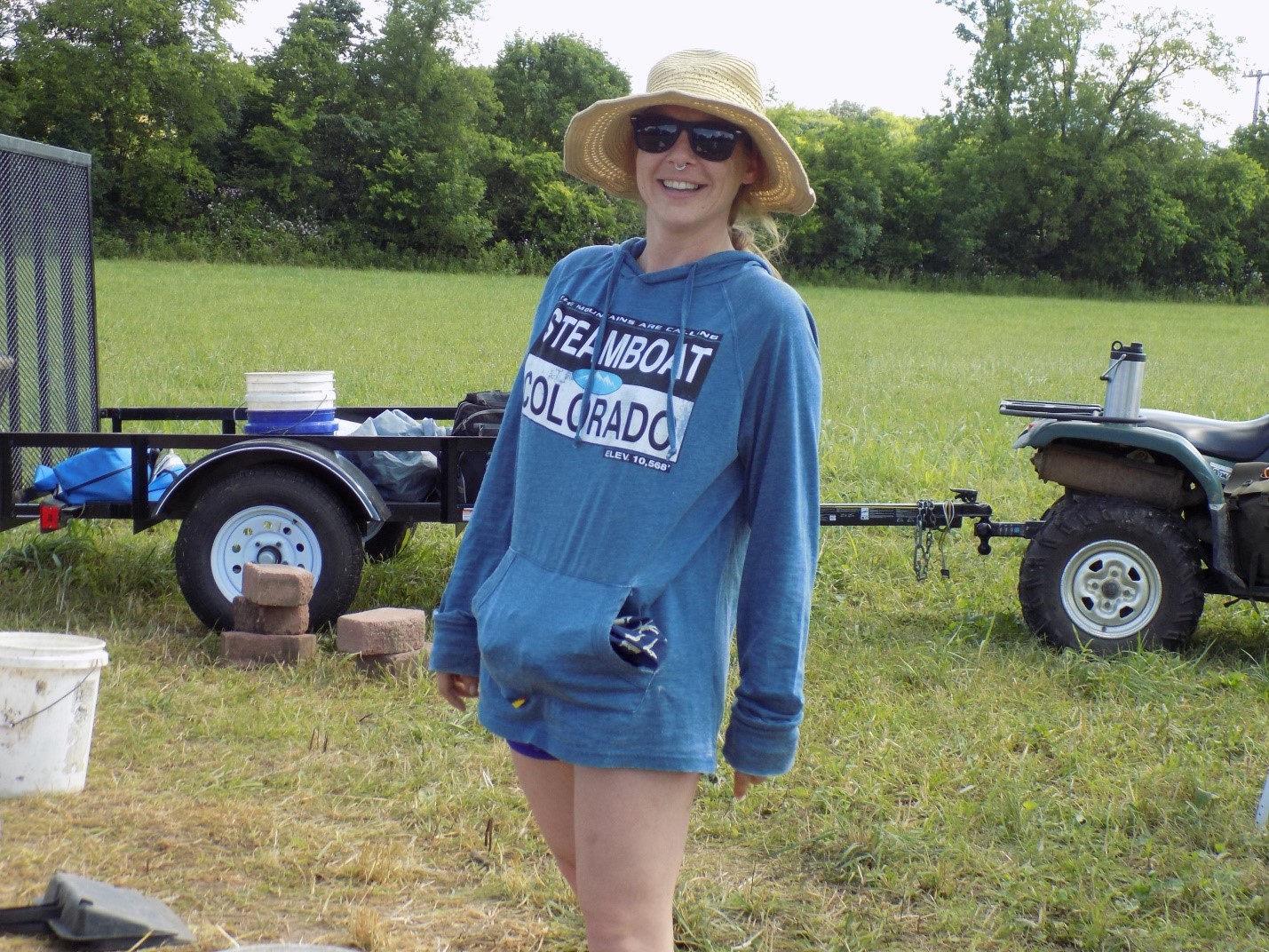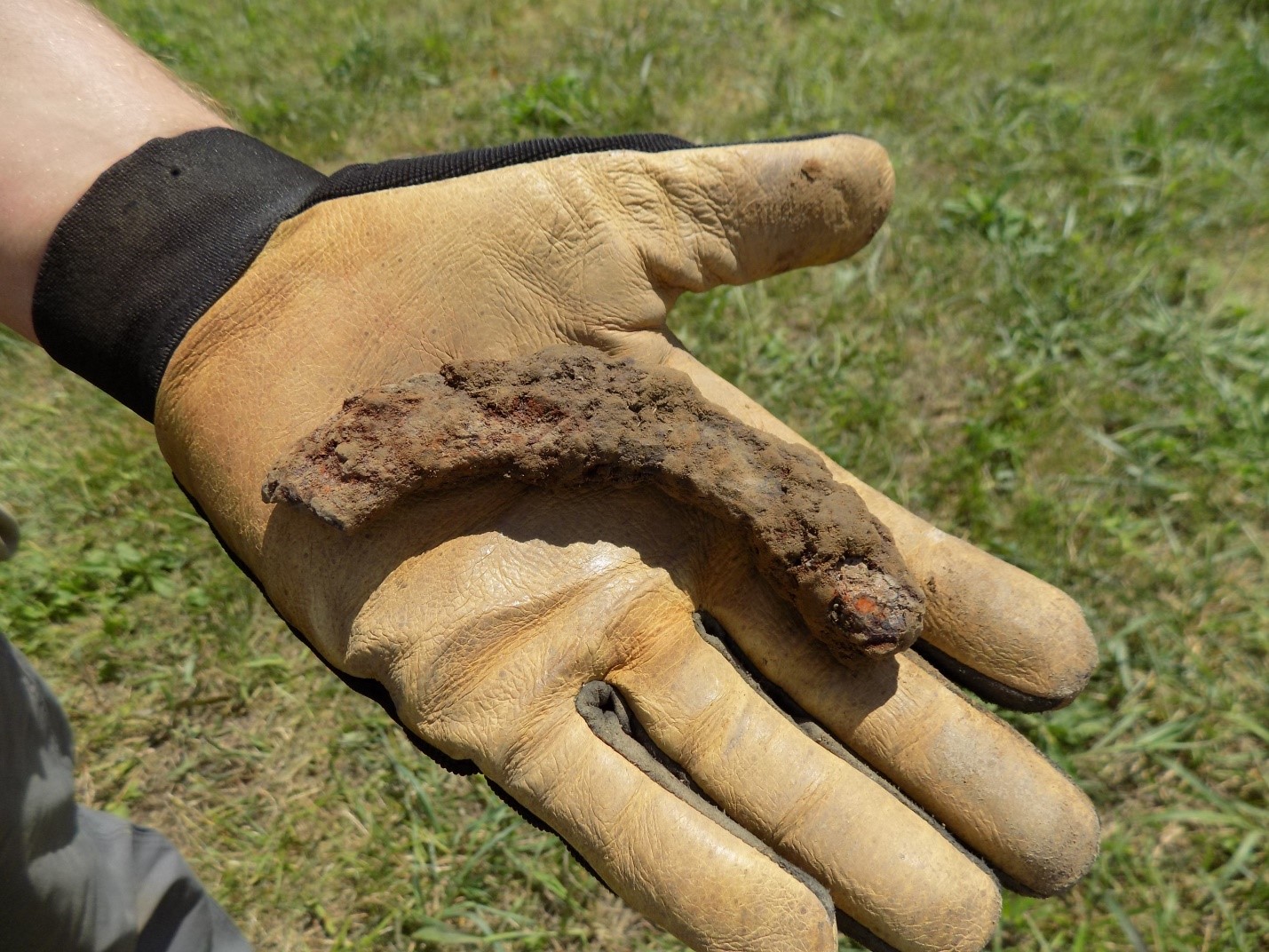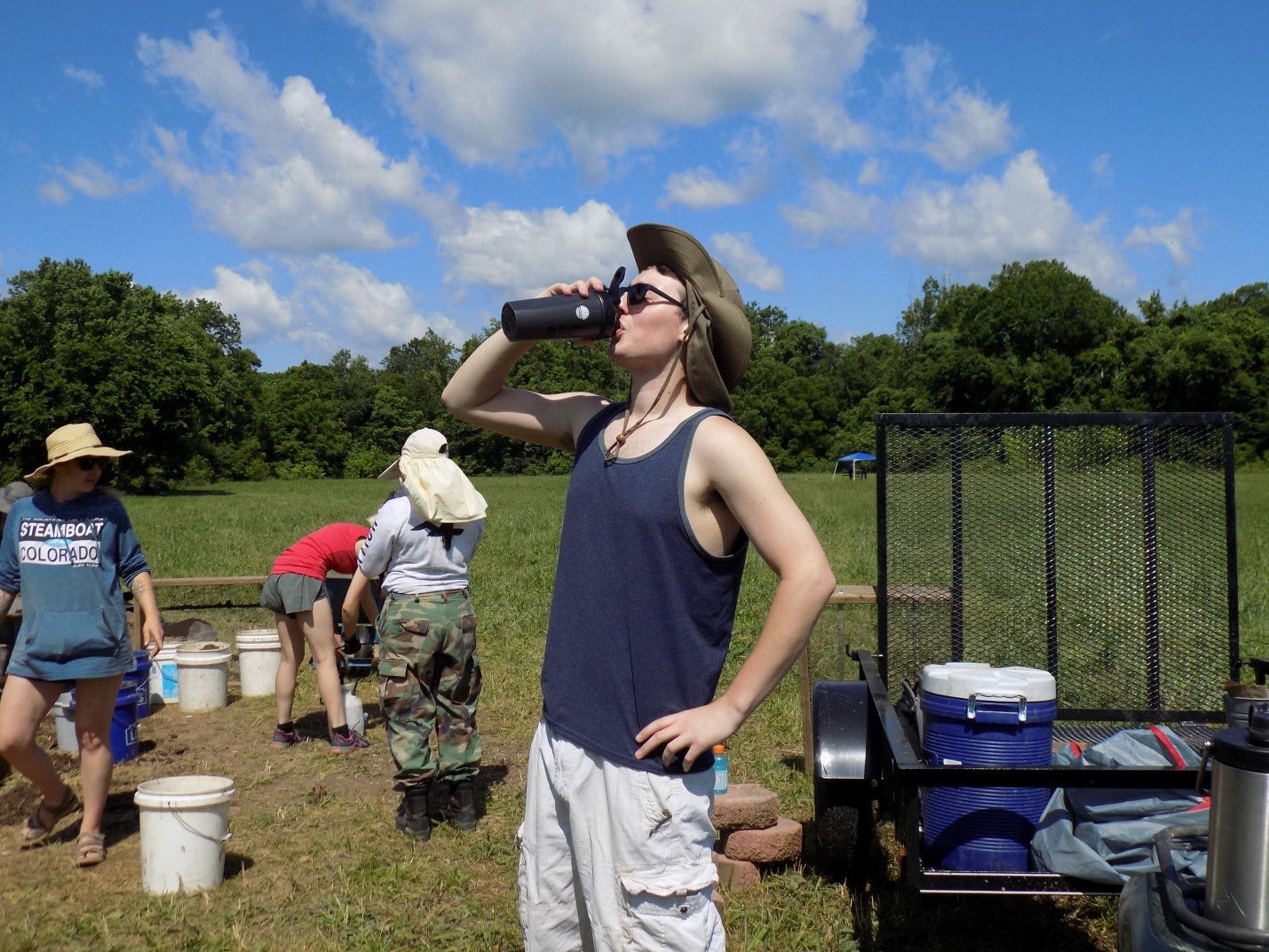Today, we were treated to visits from several former field school students.

They spent the entire day with us out in the field helping us dig units, including C20, a new test square a couple meters east of C17. We opened this unit to see if we can expose more historic features associated with a series of cottages built near the mineral springs in the early 20th century. This unit is also located in the suspected location of the horse racetrack, which meant all were on the lookout for horse-related artifacts, and lo and behold, we found our third possible horseshoe.

Even though we only opened C20 today, Field Assistant Maddie and her crew are almost done with Level 3. Luckily, Brandon, a member of the 2017 field crew was there to remind them to stay hydrated.

We also had visits from Judy, Joey, and Joey’s human, Georgia. Georgia and Judy brought a variety of treats including popsicles for the field crew to enjoy. Between the cool weather, snacks, and our visitors, we are going to get spoiled.
You may notice that in the photo above, Georgia is carrying a camera. This meant that the elusive Dr. Eubanks, who carries the site camera with him at all times, could be photographed. He can be seen here giving a short tutorial on how to dig a “shovel test pit.”
When the field crew wasn’t eating popsicles or listening to Dr. Eubanks talk about shovel test pits, they were busy digging. Our possible smudge pit feature from Unit C18 mentioned in yesterday’s post turned out to be an actual smudge pit filled with charred corn cobs. This made field school student Richard quite happy as he is doing a research project on smudge pits.
To the east of Richard’s smudge pit in unit C17, the crew unearthed our first jar handle fragment. It may not look like much, but the sizes of late prehistoric jar handles change over time in a predictable manner meaning that we can measure the handle once we get back to the lab to arrive at an approximate date of its manufacture.
Finally, Unit C19, all off by itself in the western half of the field still has not yet yielded any features, though the crew is still uncovering numerous historic artifacts including some relatively large pieces of ceramics with decorative floral patterns.